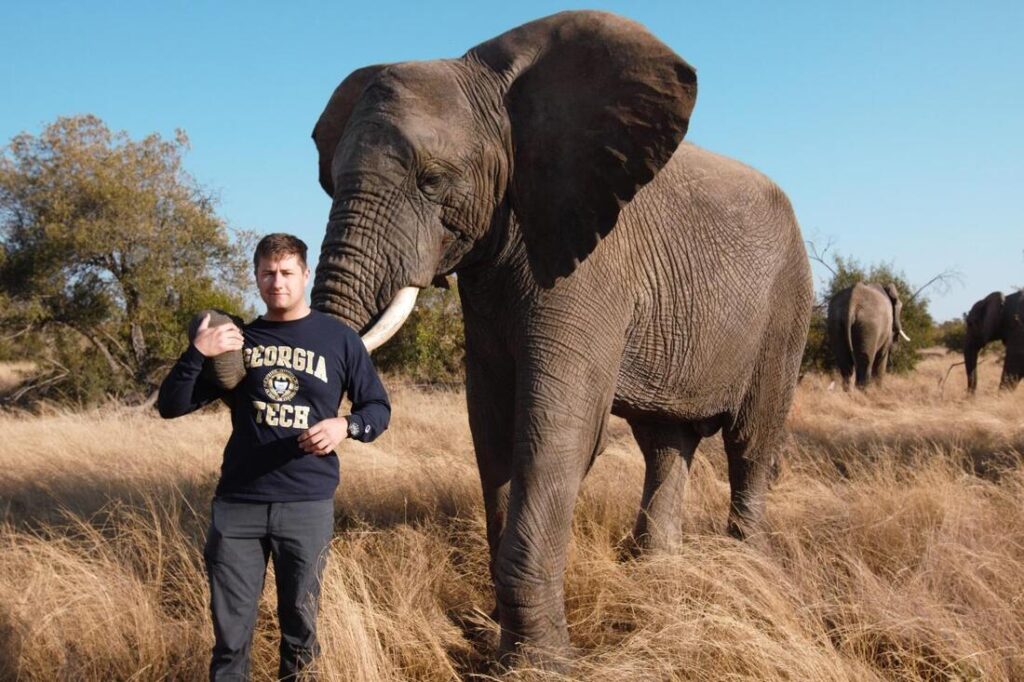
Edited by Simon Bakke
Working with animals is one of the most gratifying and frustrating things during experiments. As an elephant researcher, I get to interact up close with the trunk of the African elephant both domestically at Zoo Atlanta and in the field in South Africa. Working with elephants is something I’ve wanted to do ever since I visited South Africa with my mom nearly 10 years ago.
My research involves understanding the capabilities and limitations of what an elephant trunk can accomplish. Elephants can pick up heavy logs and even pick up tortilla chips without breaking them… which I can’t even do. How does the elephant move around this completely muscular trunk, and what precisely can they do? This is one of the goals of my research, and we are studying elephants as they have the largest and longest “muscular hydrostat.”

The elephant trunk is one of the three common examples of a muscular hydrostat, along with octopus arms and mammal tongues. If you stick your tongue out you may notice your tongue shrinks in width. This is because your tongue has constant volume when it elongates. Muscular hydrostats can accomplish elongation, bending, and twisting all while obeying this. Don’t believe me? Try to bend and twist your tongue around. I get to perform experiments with elephants at the Atlanta Zoo and observe the movement of the trunk as it stretches, bends, and twists. Our goal is to understand how an appendage this large (up to 150 kg) can be so strong and flexible, while being able to lift everything from a log to a tortilla chip. This work will ultimately further the pursuit of bio-inspired robots that can be equally strong and flexible.
Unfortunately, researching elephant trunks is immensely difficult. Elephants are strong and super smart, and very often you must go through several iterations of an experiment until you’re able to get the information you need…sometimes they even break or dismantle your experiment!
Through this work I have been able to travel to to Bela Bela, Limpopo in South Africa to meet some elephants of the African Bush. I visited Adventures with Elephants and met a herd of 7 African elephants. In working with these elephants, we also hope to use engineering techniques for mitigating Human-Elephant Conflict.
This work will ultimately further the pursuit of bio-inspired robots that can be equally strong and flexible.
This work is to reduce the impact of elephant crop raiding, as well as find techniques to work towards poaching prevention. Elephants eat 180 g of food per minute and only sleep for a few hours each night. They are so massive and consume so much food a herd can destroy a farm in a matter of hours. We hope to design some innovative and inexpensive techniques that can be used to help detour the elephants from conflicting with humans.



Leave a Reply